229 New Apartments in Brewers’ Hill
But one of the two new buildings being developed generated grr-ipes from Matt Wild and Mary Louise Schumacher. Dare we disagree?
The biggest development news last week was that Rick Wiegand, owner of the Ambassador Hotel, plans a $52.7 million redevelopment of a historic building at 100 E. Pleasant St., commonly known as the Fortress. As the story by Sean Ryan of the Business Journal reported, the historic 1892 building will be converted into an apartment building with 176 units. The project was awarded a $9.15 million historic preservation tax credit from the Wisconsin Economic Development Corp. This represented a large portion of the $34 million in tax credits allocated to projects in Milwaukee in 2014, and if Gov. Scott Walker is successful in lowering the historic tax credit cap to just $10 million a year this one project would have essentially eaten up the state’s entire allocation.
But it wasn’t the use of historic tax credits that kept this project in the news. Rather, it was Matt Wild of the Milwaukee Record and Mary Louise Schumacher of the Journal Sentinel, responding to news of the project by lamenting the loss to the arts community. Wild’s take on the project was easily summed up in his title, “Milwaukee continues to support working artists by getting rid of places where artists can work.” And Schumacher told the story of the building’s important role in the Milwaukee art scene and included an impressive list of artists that have worked, and possibly lived, in the the building. That includes artists such as Faythe Levine, Tyson Reeder, Evan Murphy, Peter Barrickman, Ray Chi and Sonji Hunt. She writes, “Like a building that burned down on Center St. in Riverwest or the demolished Sydney Hih, the passing of these artist hubs are a loss. Places where artists find cheap rent, each other, a sense of community and willing collaborators are often fragile and formed organically. They are not re-created easily.” Wild, too, compares the situation to the loss of Sydney Hih.
At first blush the comparison makes sense as both buildings had long histories in art and music, except that Sydney Hih was demolished and with it the reminders of its storied past. By contrast, the redevelopment of the Fortress will add hundreds of residents to the neighborhood while preserving a historic building. In fact the Fortress is following a similar path to that of numerous former warehouses that were redeveloped in the Historic Third Ward. At one time the ward was a low-rent artist haven, and today is one of Milwaukee’s best neighborhoods, with so many art galleries it is a central focus of the city’s Gallery Night. Meanwhile artists are finding new studio space in Bay View, Riverwest, and throughout the city.
The Fortress
Just a few blocks away, another apartment project will soon be underway in Brewers’ Hill, as Tom Daykin of the Journal Sentinel reports. Construction of Vangard Group’s Ingram Place apartments, a four-story, 53-unit apartment building at 456 E. Brown St., will begin in March. Demolition of a former funeral home will begin shortly and the new building should be completed by December 2015.
Ingram Place Renderings & Plans
Arena Update
Another week, another set of stories on the push to build a new NBA arena.
Rich Kirchen of the Business Journal, informs us that although Milwaukee Bucks co-owner Wesley Edens is rich and has invested $150 million of his own money into a startup fund, his partners in the Bucks are even richer. Both Marc Lasry and Jamie Dinan are on the 2015 Forbes international billionaires list. Also this week, Marquette University indicated it didn’t intend to help fund the arena, according to a story by Kirchen. “It’s going to be a lease-tenant relationship with the Bucks and that is what we’ve discussed,” Lovell said at Friday morning’s Milwaukee Business Journal Power Breakfast at The Pfister Hotel. And finally, an organization was formed to support the building of a new arena. You can follow the group, Play It Forward Wisconsin, on facebook.
Not to be forgotten, Don Walker of the Journal Sentinel reports that Frank Gimbel, chairman of the Wisconsin Center District board, on Wednesday said expanding the convention center should be part of the arena discussion. “The convention center expansion is something we’ve been talking about for several years now, and we are kind of at a point in time where the public has become more aware of development downtown. We need to be at the table,” said Gimbel. There was not a word in the story, or any other article we can recall, to suggest the Bucks owners have a great interest in this idea.
Tarantino to the Top
Milwaukee County announced that Jim Tarantino will be the county’s next Economic Development Director. According to a story by Ryan, Tarantino will be replacing Teig Whaley-Smith who is now serving as the county’s Department of Administrative Services Director. Tarantino is a 2009 graduate from the UW-Milwaukee School of Architecture and Urban Planning. Tarantino was most recently the executive director of Gateway to Milwaukee, and previously worked at the Energy Exchange, Lincoln Village Business Association and Milwaukee Bicycle Collective. But most importantly, Tarantino was the original founder of the Urban Milwaukee Book Club. And during the Riverwest 24, if you’re lucky, you might catch a glimpse of Tarantino flying by. Congrats, Jim.
Plats and Parcels
-
New Third Ward Tower Will Be Milwaukee’s Priciest
 Mar 3rd, 2024 by Jeramey Jannene
Mar 3rd, 2024 by Jeramey Jannene
-
New Corporate Headquarters, 130 Jobs For Downtown
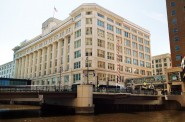 Feb 25th, 2024 by Jeramey Jannene
Feb 25th, 2024 by Jeramey Jannene
-
A Four-Way Preservation Fight Over Wisconsin Avenue
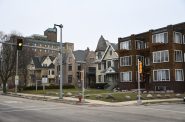 Feb 18th, 2024 by Jeramey Jannene
Feb 18th, 2024 by Jeramey Jannene


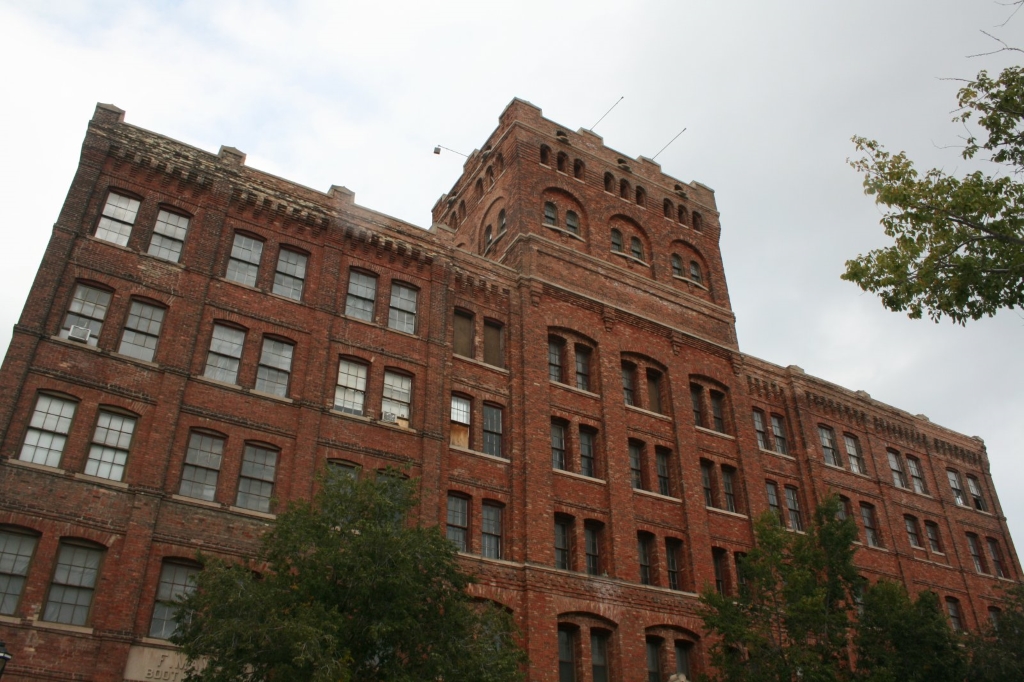
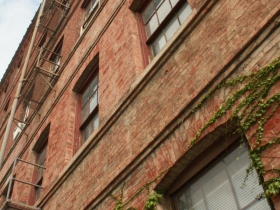
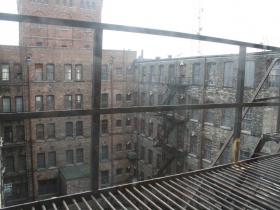
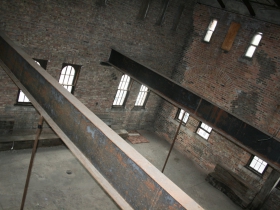
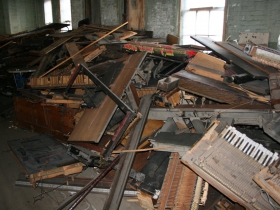
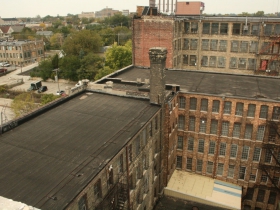
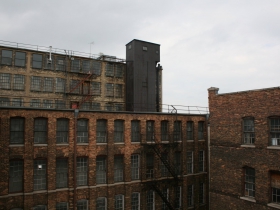
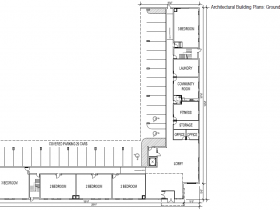
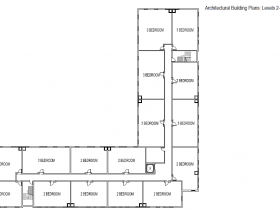
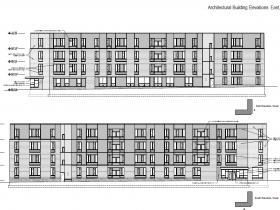
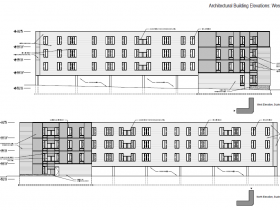
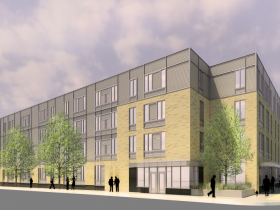
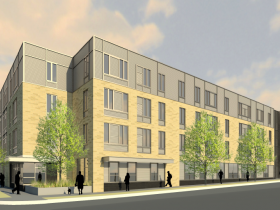




















That’s just the way it is. Artists move to (and improve) a low rent area and then, when the rent gets too damn high, move to (and improve) another low rent area.
Artists have always needed cheap rents, and this has always meant being in dilapidated buildings on the very verge of being condemned. Do Matt Wild and Mary Louise Schumacher think the City should keep some buildings or parts of the city in that condition for their benefit – like a special preserve or human zoo for artists? Perhaps they will support the “Kooyenga-Darling Plantation” plan to create exactly such a zone of neglect, danger and deterioration in the inner city.
As for the convention center expansion, nobody expects the Bucks owners to bankroll or champion it, but given that the Wisconsin Center contributes two-and-a-half times as much to the economy as the BMO Harris Bradley Center, City officials ought to at least get behind the idea.
Travel just five minutes west on Pleasant/Walnut/Lisbon to 30th – 34th and Lisbon Ave. (this route even has its own bike lane!) and there are wonderful old brick buildings and abundant vacant land,much city owned, waiting to be discovered and loved in a neighborhood of people who care. The corner of 34th and Lisbon is a delightful little food, artist, health and education hub of activity with Amaranth Bakery,Tabal Chocolate, Express Yourself Milwaukee, Our Next Generation, Munier’s clay and tile works and the brand new Progressive Community Health Center. We are African American, Hmong, White, Hispanic and Somali and it all works. Both the UWM School of Architecture and Urban Planning and MIAD are using this hub as a place for student neighborhood immersion learning.
Stop in at Amaranth any time, have something great to eat and strike up a conversation about the neighborhood. With some urban grit in your blood, you can afford to buy, work, live and make a difference here, all five minutes from downtown.
Why is it that every time Franklyn Gimbel uses the word “we” I feel a tugging sensation on my wallet? Does anyone know if he even lives in the city of Milwaukee?
The simply economics is that the building has been in the state of disrepair for decades. The low rents do not generate enough revenue to rehabilitate and update facilities, exterior envelope repairs, etc. The building is less than 50% occupied with only a portion of the tenant base artists. The largest tenant is actually not arts related. Perfection – one thing. Really – another. In my opinion, it is far better to see the building remain part of the Milwaukee’s historic fabric rather than see it site underutilized.
If anyone is interested in reading what I actually wrote as opposed to what someone else inaccurately characterized as my point of view, here’s a link: http://www.jsonline.com/entertainment/arts/the-fortress-buildings-life-as-a-rabbit-warren-of-artist-spaces-is-ending-b99454247z1-295215691.html.
It is in fact possible to mark the end of an era for the creative community within the Fortress and consider that a loss while also accepting that the historic complex should be preserved and redeveloped.